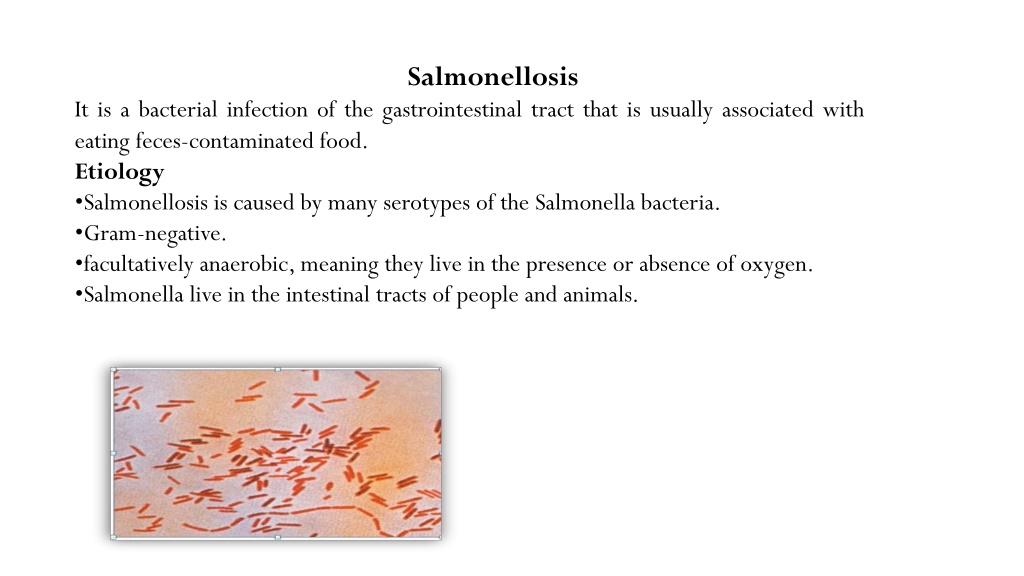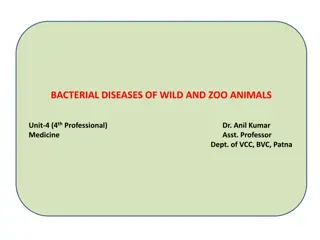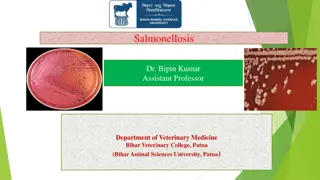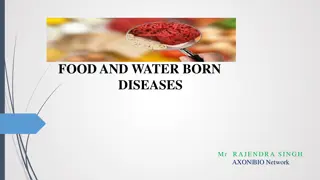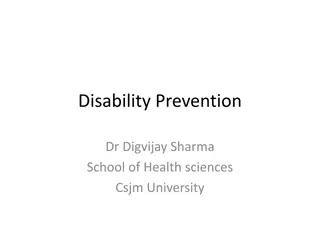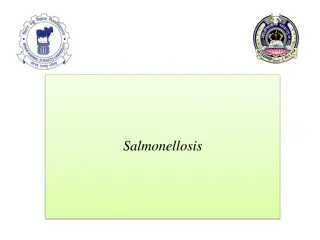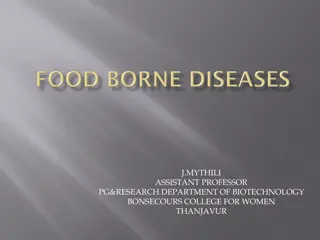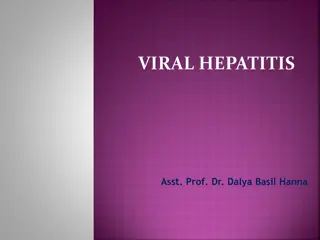Understanding Salmonellosis: Causes, Symptoms, and Prevention
Salmonellosis is a bacterial infection of the gastrointestinal tract caused by various serotypes of Salmonella bacteria. It affects both animals and humans, commonly spread through contaminated food sources. Symptoms in humans include diarrhea, abdominal cramps, and fever, with potential complications if not treated promptly. Proper hygiene, food safety practices, and early diagnosis are essential in preventing and managing salmonellosis.
Download Presentation

Please find below an Image/Link to download the presentation.
The content on the website is provided AS IS for your information and personal use only. It may not be sold, licensed, or shared on other websites without obtaining consent from the author. Download presentation by click this link. If you encounter any issues during the download, it is possible that the publisher has removed the file from their server.
E N D
Presentation Transcript
Salmonellosis It is a bacterial infection of the gastrointestinal tract that is usually associated with eating feces-contaminated food. Etiology Salmonellosis is caused by many serotypes of the Salmonella bacteria. Gram-negative. facultatively anaerobic, meaning they live in the presence or absence of oxygen. Salmonella live in the intestinal tracts of people and animals.
Hosts Animals Salmonella resides in the intestinal tracts of both warm blooded and coldblooded animals . In people, anyone who is infected with the Salmonella organism can get sick, but it most commonly affects children under 5, elderly people, and people with compromised or weakened immune systems. Salmonella carriers often appear healthy.
Transmission Many people become infected with Salmonella organisms by eating contaminated food, such as chicken, raw eggs, beef, milk, milk products, and vegetables, any food of animal origin can be a potential source of infection to people. Livestock can become infected, if they come in contact with infected animals. Pets, especially those with diarrhea, can pass Salmonella in their feces, transmission to people occurs when people do not wash their hands after coming in contact with the feces. Person-to-person transmission can occur if infected people do not wash their hands after using the bathroom and then handle food.
Salmonellosis in animals Salmonellosis in animals may or may not be apparent. Some animals are carriers that shed Salmonella at various intervals. Ruminants 1) Salmonellosis affects calves primarily and is stress-related, with a high mortality rate. 2) Adult cattle also can be affected. The clinical signs start with high fever, followed by severe diarrhea and abdominal pain. 3) Abortion may occur. 4) Carrier animals shed Salmonella in feces and milk. Fowl 1) Chickens, turkeys, and ducks are some of the most important sources of human salmonellosis. 2) Raw eggs can also be a source of Salmonella. 3) The outside shell can become contaminated with infected feces and the interior can become infected before the shell is formed.
Salmonellosis in humans a.Not everyone exposed to Salmonella will become ill. b.When illness does occur, it will manifest itself as diarrhea, possibly bloody, abdominal cramps, and fever between 12 and 72 hours after infection. c.Other clinical signs may include headache, vomiting, and muscle aches. d. Without treatment, most people will recover within a week. It may take some people months before their bowel movements are completely back to normal. e. In some cases, the organism may pass into the blood stream and be distributed throughout the body, causing organ damage and possibly death.
Diagnosis In people: Salmonellosis is diagnosed through laboratory tests that include culturing the feces of sick people. Serologic testing is also used. Once salmonellosis has been diagnosed, further testing to identify which serotype is involved will help determine which antibiotic can be used. In animals Diagnosis is based on fecal culture and serologic testing.
Prevention Wash hands thoroughly with warm water and soap after using the bathroom and after handling pets or their feces Consider all meat, poultry, vegetables, and milk or milk products contaminated, and handle them accordingly Buy only pasteurized milk and milk products Wash and properly store all vegetables and fruits Carrier animals must be identified and eliminated from a herd or flock
